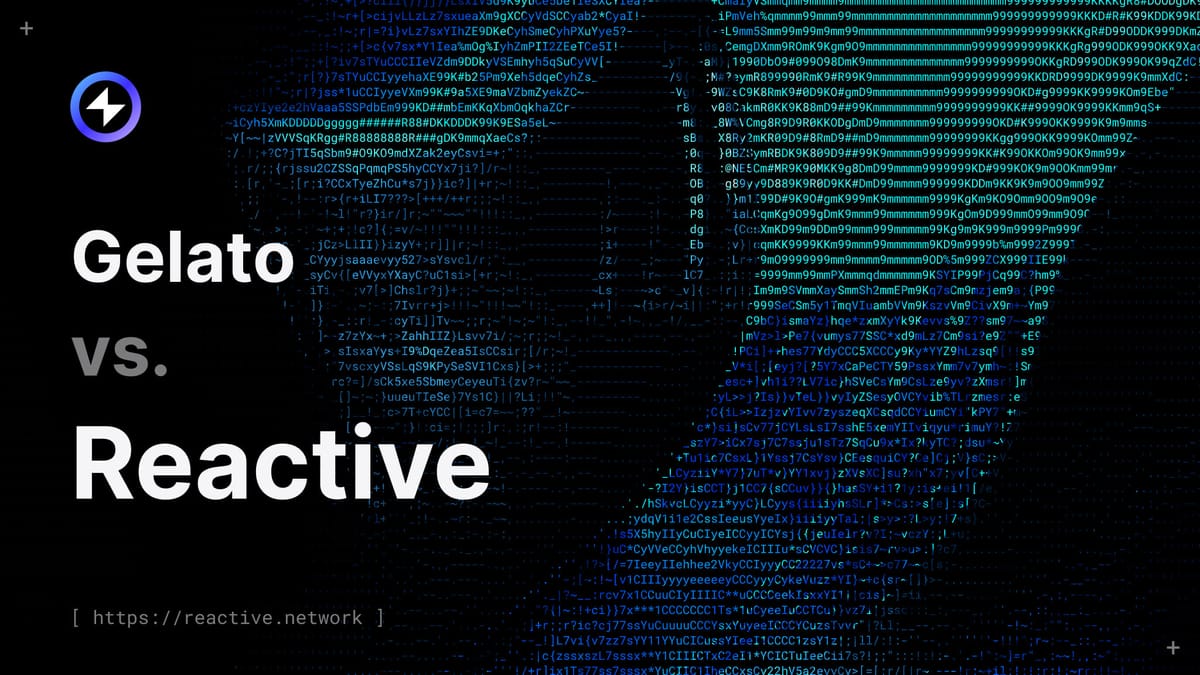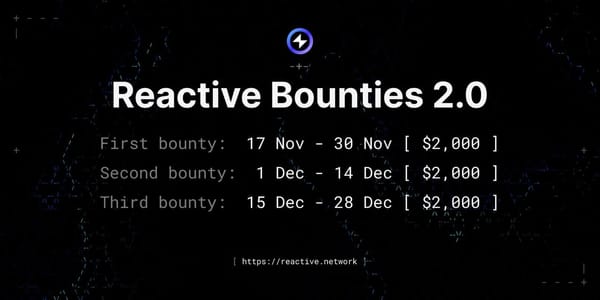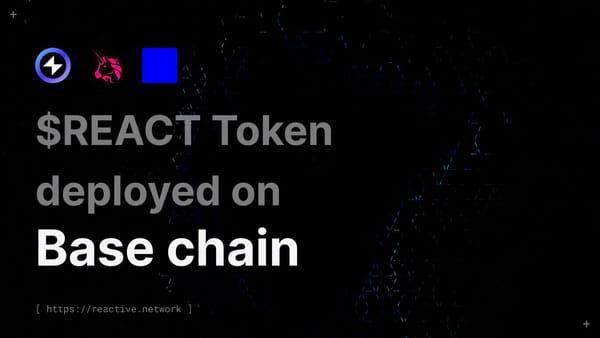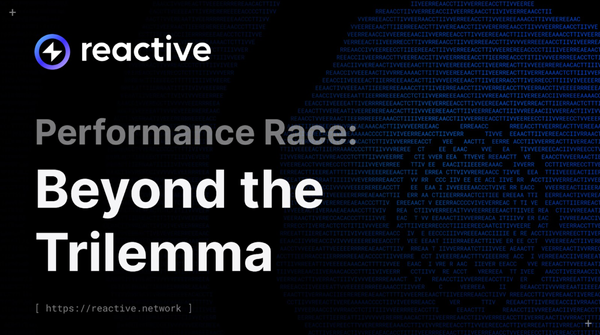Reactive or Gelato? Choosing the Right Automation Tool for Your dApp
This article compares Gelato and Reactive Smart Contracts, unpacking their core differences in automation design, cross-chain capabilities, and suitability for real-world Web3 applications.

Automation is a critical aspect of blockchain applications, eliminating manual intervention and ensuring reliable transaction execution. Both Gelato and Reactive aim to bring automation to smart contracts — but their design philosophies, capabilities, and ideal use cases differ. This article compares the two, highlighting their core approaches, strengths, and limitations – particularly in the context of cross-chain automation.
Understanding Gelato
Gelato is a decentralized network of bots that automates smart contract execution across Ethereum and other EVM-compatible chains. It allows developers to outsource their automation infrastructure, reducing the need for custom bots and minimizing single points of failure.
The protocol charges a percentage of gas fees from executed transactions, which are shared among bot operators and routed through the Gelato DAO. Dapps like KeeperDAO, InstaDApp, and QuickSwap rely on Gelato for services such as debt automation, yield farming, and limit orders.
Key Features
Unlike Chainlink Automation, Gelato doesn’t require deploying extra cron contracts. Users can configure task automation directly through the UI or SDK. The platform’s capabilities are:
- Plug-and-play automation via a UI or SDK
- Decentralized bot network for high availability and fault tolerance
- Time-efficient setup — no need to manage custom infra
- Reliable execution — at least one bot is always monitoring
- Sustainable fee model — pooled execution costs benefit operators and users
- Modular automation components – “Relay” for transaction relaying and meta-transactions, “VRF” for verifiable randomness (e.g. lotteries, randomness-based games), and “Rebalance” for automated portfolio or collateral adjustments
Gelato supports multiple execution models suitable to various developers:
- TypeScript Functions – Off-chain logic, requires whitelisting
- Solidity Functions – On-chain conditional execution via a `checker()` function
- Automated Transactions – Predefined time-based execution with no coding required
Limitations
Despite its strengths, Gelato has several limitations. Most notably, it lacks cross-chain support in its UI, making it unsuitable for dApps that span multiple networks. Additionally, task execution can sometimes behave unpredictably: logs may fail to display, execution errors may lack useful messages, and some tasks run even when funding appears absent. These issues can make debugging and reliability management more difficult in production environments.
Setting Up Automation with Gelato
1. Use the Gelato UI
Go to https://app.gelato.network and
- Connect your wallet
- Create a task
- Choose a trigger (e.g., time interval, on-chain event)
- Specify target contract, ABI, and function
2. Use the SDK
Write automation logic in TypeScript or Solidity. Integrate it into your dApp or backend.
Example: On-Chain Event Automation
To automate with Gelato, specify this contract’s event as the trigger and configure the target function and conditions via the UI.
Understanding Reactive
Reactive contracts focus on event-driven automation across multiple smart contracts and chains, offering far greater flexibility than Gelato. Built for cross-chain environments, they allow contracts to respond dynamically to real-time state changes, making them ideal for DeFi, governance, and other complex workflows. Unlike rigid automation systems, reactive contracts support custom logic and reactive behaviors without hardcoded parameters. This allows execution logic to adapt to live data. Debugging and deployment are also more transparent.
Feature Comparison
| Feature | Gelato | Reactive Contracts |
|---|---|---|
| Automation Type | Time/condition-based on-chain tasks | Event-driven, dynamic execution |
| Cross-Chain Support | ❌ Not supported in UI | ✅ Built-in |
| UI | ✅ Simple, no-code setup | ⚠️ Requires setup, but highly flexible |
| Contract Modification | ❌ No dynamic behavior | ✅ Supports real-time event processing |
| Execution Logic | Checker function polling | Event listeners + dynamic logic |
| Debugging Experience | Manual log tracking | Transparent and deterministic |
Recap
Gelato is a solid choice for developers who need quick, reliable, and decentralized automation within a single chain. Its UI-based setup requires no additional code, enabling fast implementation with minimal friction. Execution is typically swift — within 12–15 seconds of an event — and no upfront contract funding is required. However, Gelato has some limitations: it lacks native cross-chain automation, its UI occasionally exhibits logging or task execution bugs, and its structure offers limited flexibility for highly dynamic workflows.
Reactive contracts, by contrast, are built for complex, event-driven use cases that span multiple chains. They support real-time responsiveness, dynamic logic, and deterministic behavior — all essential for advanced dApps in DeFi, governance, or interoperability layers. While Reactive comes with a steeper learning curve and less out-of-the-box simplicity, it offers far greater extensibility, making it the better choice for developers building beyond the boundaries of a single network.
About Reactive Network
The Reactive Network, pioneered by PARSIQ, ushers in a new wave of blockchain innovation through its Reactive Smart Contracts (RSCs). These advanced contracts can autonomously execute based on specific on-chain events, eliminating the need for off-chain computation and heralding a seamless cross-chain ecosystem vital for Web3’s growth.
Central to this breakthrough is the Inversion of Control (IoC) framework, which redefines smart contracts and decentralized applications (DApps) by imbuing them with unparalleled autonomy, efficiency, and interactivity. By marrying RSCs with IoC, Reactive Network is setting the stage for a transformative blockchain era, characterized by enhanced interoperability and the robust, user-friendly foundation Web3 demands.
Website | Blog | Twitter | Telegram | Discord | Docs





